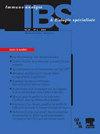Recent Advances in Understanding the Role of TIGIT+ Follicular Helper T Cells in IgG4-Related Disease
引用次数: 2
Abstract
IgG4-related disease (IgG4-RD) is a fibro-inflammatory disease characterized by elevated serum IgG4 levels and massive infiltration of IgG4+plasma cells. Although storiform fibrosis, obliterative phlebitis and IgG4+plasma cell infiltration are well described pathological features in this disease, the excessive formation of tertiary lymphoid organs (TLOs), particularly in the early phase of the disease lesions, has gained much attention. TLOs of IgG4-RD are orchestrated by specific immune cell subsets including follicular helper T cells (Tfh), CD20+ B cells, and CD21+ follicular dendritic cells (FDCs). Tfh is the key player of this disease because recent studies have suggested the pathological role of this immune cell subset in formation of TLOs, helping IgG4+plasma cell differentiation, inducing storiform fibrosis by secreting interleukin-4, and activating cytotoxic T cells by secreting interleukin-21. We have recently identified a new Tfh subset which expresses T cell immunoreceptor with immunoglobulin and ITIM domain (TIGIT). TIGIT+Tfh efficiently produces interleukin-21 through OX40 signal, and the increase in peripheral TIGIT+Tfh cells reflects disease activity in IgG4-RD. TIGIT is important to mediate the retention and positioning of TIGIT+Tfh within TLOs through interaction with CD155 expressed on CD21+ FDCs. In this review, we summarize and discuss recent progress in understanding the pathogenesis of IgG4-RD, focusing on TIGIT+Tfh.TIGIT+滤泡辅助性T细胞在igg4相关疾病中的作用研究进展
IgG4相关疾病(IgG4- rd)是一种以血清IgG4水平升高和IgG4+浆细胞大量浸润为特征的纤维炎性疾病。虽然故事状纤维化、闭塞性静脉炎和IgG4+浆细胞浸润是本病的病理特征,但三级淋巴器官(TLOs)的过度形成,特别是在疾病病变的早期,已经引起了人们的广泛关注。IgG4-RD的TLOs由特异性免疫细胞亚群(包括滤泡辅助性T细胞(Tfh)、CD20+ B细胞和CD21+滤泡树突状细胞(fdc))协调。Tfh是该疾病的关键参与者,因为最近的研究表明该免疫细胞亚群在TLOs形成中的病理作用,帮助IgG4+浆细胞分化,通过分泌白细胞介素-4诱导故事状纤维化,并通过分泌白细胞介素-21激活细胞毒性T细胞。我们最近发现了一个新的Tfh亚群,它表达带有免疫球蛋白和ITIM结构域的T细胞免疫受体(TIGIT)。TIGIT+Tfh通过OX40信号有效产生白介素-21,外周TIGIT+Tfh细胞的增加反映了IgG4-RD的疾病活性。TIGIT通过与CD21+ fdc上表达的CD155相互作用介导TIGIT+Tfh在TLOs中的保留和定位。本文就IgG4-RD发病机制的最新研究进展进行综述和讨论,重点介绍TIGIT+Tfh。
本文章由计算机程序翻译,如有差异,请以英文原文为准。
求助全文
约1分钟内获得全文
求助全文

 求助内容:
求助内容: 应助结果提醒方式:
应助结果提醒方式:


